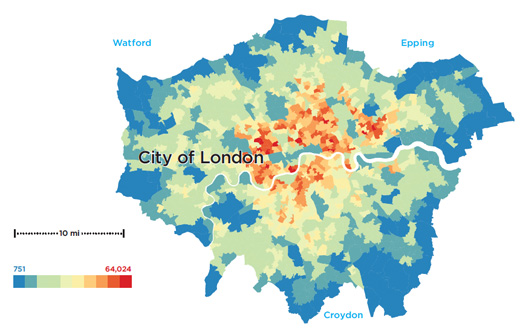London Population Density Map – safe and popular higher density neighbourhoods. But London’s population is not only growing: it is changing. Its incoming population will be younger, more ethnically diverse and composed of more . Increasing density is a key way of delivering more homes where land supply is constrained. London Plan Policy 3.4 aims to ensure that development optimises housing output for different types of .
London Population Density Map
Source : jamesjgleeson.wordpress.com
Drawing) Rings Around The World: A better map of population density
Source : drawingrings.blogspot.com
Density Within or Growth Outward? | SPUR
Source : www.spur.org
Population density (inhabitants per square kilometre) in the
Source : www.researchgate.net
OC] A comparative 3D population density map of Paris and London
Source : www.reddit.com
IJERPH | Free Full Text | From Green Spaces to Squares: Mapping
Source : www.mdpi.com
File:Greater London population density map, 2011 census.png
Source : en.m.wikipedia.org
OC] A comparative 3D population density map of Paris and London
Source : www.reddit.com
London Population Map — Information is Beautiful Awards
Source : www.informationisbeautifulawards.com
London population stats in maps and graphs.
Source : www.plumplot.co.uk
London Population Density Map Dasymetric map of London’s population density, 2011 – James Gleeson: In 2020, the population of the UK rose to over 67 million people. The major cities of the UK can be seen on the map. London is the UK’s largest city and Birmingham is its second largest city. . London, on the other hand, has a population density of around 5,100 people/km 2, not even a fifth of that of Mumbai! Athens, the capital city of Greece, has a population of 3,685,000 and a land .










